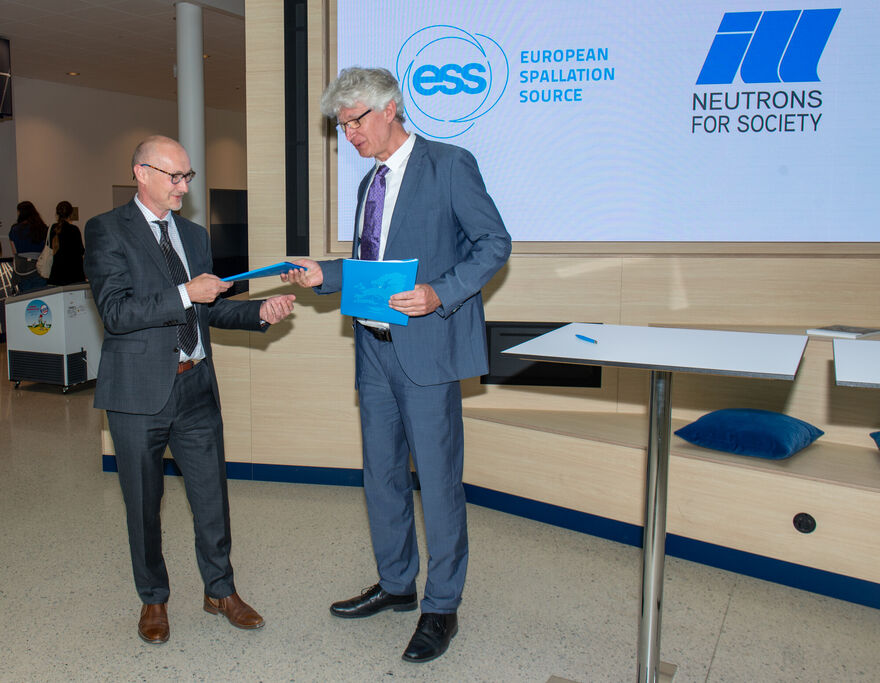
Key representatives from the Institut Laue-Langevin (ILL), Grenoble, France, have been on a two-day visit to ESS, which included signing an extension of the Memorandum of Understanding between the two facilities.
Paul Langan, the Director of ILL, and his team started the two-day visit with a site walk, followed by a collaboration meeting with ESS's Science Management Team later in the afternoon. The second day included a meeting between the management teams from the two facilities, where achievements, challenges and the way forward were discussed, followed by a ceremony marking the formal signing of the Memorandum of Understanding (MoU).
For over 50 years the ILL has been the world’s most productive neutron source, leading the network of European neutron facilities in both neutron science and technology. The unprecedented performance planned at ESS will make it the world’s leading neutron facility for decades to come.
Progress in neutron science depends on the continuous development of methods and technology through the network of national and international facilities, alongside the global user community. The collaboration between ESS and ILL is a key example, and demonstrates the two facilities’ commitment to combining their forces in the interests of science, the neutron user community, and their stakeholders.
ESS and ILL both work to reinforce Europe’s leading position in neutron research and technology by optimising the use of available resources. Meetings of this kind prove very useful for the sharing of information, and provide a forum to update each other and discuss future plans.
The two facilities first formalised their will to cooperate by signing a MoU in September 2011. In June 2017 they decided to further their cooperation through a second MoU. The two facilites signed a five-year extension of this MoU at the meeting at ESS.
The MoU facilitates the exchange of experience and technical expertise found at ESS and ILL in order to generate new capabilities, and provides the framework required for enhanced cooperation between the two facilities, particularly in the fields of neutron-scattering instrumentation, technologies, and beam components and optics. It also allows for the exchange of personnel and information, as well as the opportunity to host joint scientific and technical meetings.

























